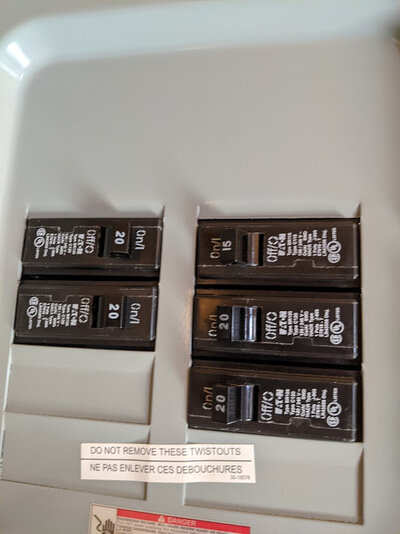CJAG
Well-known member
We have a reunion site in SE Oklahoma. There are several cabins on the property tied to one electrical system. There is one cabin that has a 100 amp panel in its home. My family wants me to tie into the underground wire about 50 feet from the cabin. Use lugs to connect to that wire and "T" it off to my pad 200 foot away. The wire is 4/3 to the home ( I think, getting final info on that soon).
For the record I will not be installing this myself. The site has several qualified elder statesmen who approve all work. I am a novice at this and I don't want to compromise the other cabins electric system. The problem is it is in the middle of nowhere so buying electrical parts at the time will be impossible, so I must prepare early.
I was hoping to tie a 50 amp panel for future RVs (I have a 30 amp trailer now). I have done some research and my run of 200 feet for the electric line is long. Also the wire to the home is only three strand and 50 amp wire is 4 strand. How can they tie into a hot lead from the 4/3 to my 6/4? I don't think it will be possible will it? I my only be able to do a 30 amp panel.
Do I add a box at the "T" with a breaker there? Or should we tap in underground and bury it all the way to my rv pad and add a breaker there?
Attached is a photo of the cabins panel not sure it will do any good.
For the record I will not be installing this myself. The site has several qualified elder statesmen who approve all work. I am a novice at this and I don't want to compromise the other cabins electric system. The problem is it is in the middle of nowhere so buying electrical parts at the time will be impossible, so I must prepare early.
I was hoping to tie a 50 amp panel for future RVs (I have a 30 amp trailer now). I have done some research and my run of 200 feet for the electric line is long. Also the wire to the home is only three strand and 50 amp wire is 4 strand. How can they tie into a hot lead from the 4/3 to my 6/4? I don't think it will be possible will it? I my only be able to do a 30 amp panel.
Do I add a box at the "T" with a breaker there? Or should we tap in underground and bury it all the way to my rv pad and add a breaker there?
Attached is a photo of the cabins panel not sure it will do any good.

